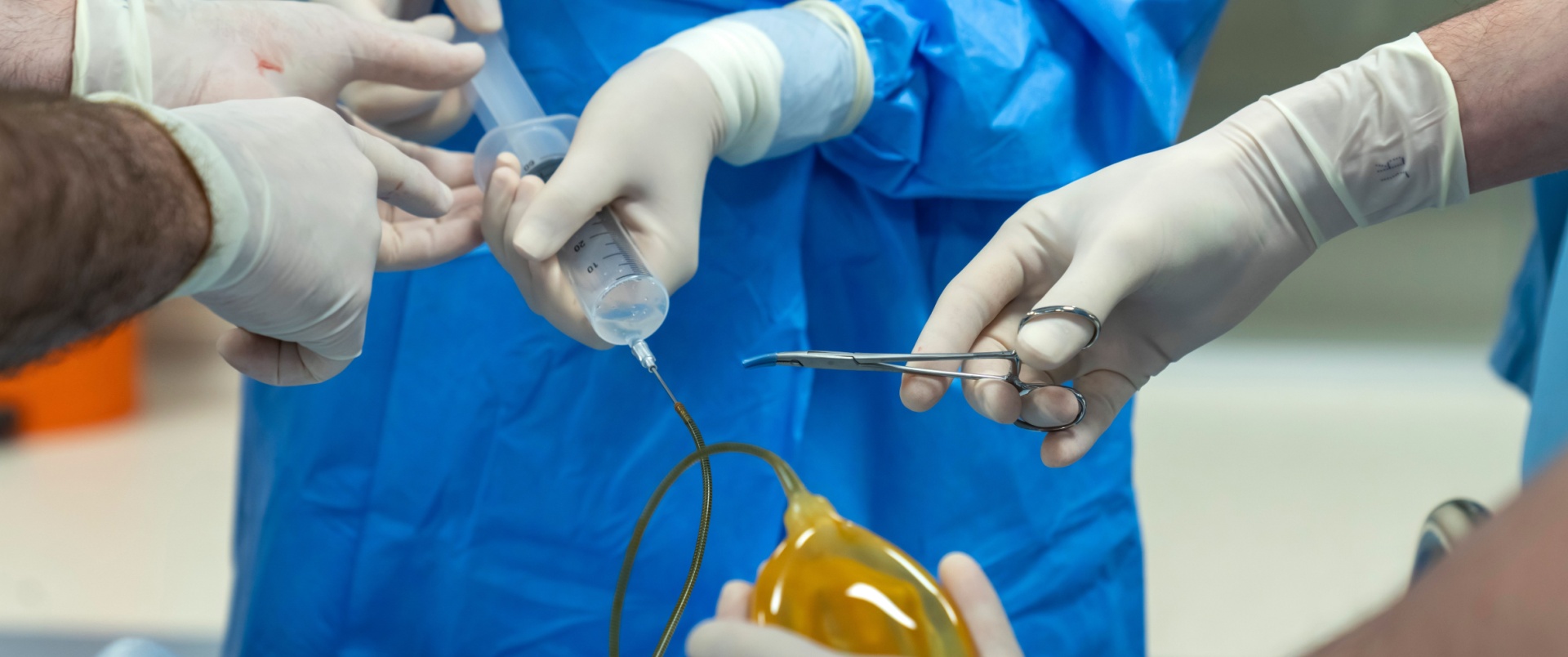Blog > Penile Implant For Erectile Dysfunction: Preparation, During & After Surgery
Penile Implant For Erectile Dysfunction: Preparation, During & After Surgery

A penile implant, also called a penile prosthesis, is a treatment method used to treat erectile dysfunction (ED).
The surgical procedure involves the insertion of inflatable or flexible rods into the penis. In the case of inflatable rods, a device filled with saline solution and a pump are inserted into the scrotum. Upon pressing the pump, the saline solution is directed to the device, causing it to expand and facilitating an erection. The device can be deflated at a later time.
Generally, this procedure is recommended for men who have not achieved successful outcomes with alternative ED treatments.
Who is a good candidate for penile implant
Suitable candidates for penile implant surgery include those:
- With persistent erectile dysfunction that hinders their sexual performance
- Who have attempted various medications for erectile dysfunction
- Who have tried a vacuum constriction device, commonly known as a penis pump
- Who used penile injection medications that has not produced satisfactory results
- Having conditions such as Peyronie’s disease that are unlikely to show improvement with alternative treatments
- With a history of prostate cancer or those having undergone a prostatectomy in the past
Types of penile implants
Different types of penile implants available for individuals seeking surgical intervention include:
3-piece implant: The most commonly employed penile implant is the inflatable device. During a three-piece implant surgery, a fluid reservoir is placed beneath the abdominal wall, while the pump and release valve are surgically implanted in the scrotum. Two inflatable cylinders are subsequently inserted into the penis. Although this procedure is the most extensive, it yields a remarkably rigid erection.
2-piece implant: In the two-piece implant, the reservoir is part of the pump that is placed in the scrotum during surgery. This particular procedure is less intricate. Typically, erections achieved with this implant are slightly less rigid than those obtained with the three-piece implant. Although operating this pump may require more effort, it requires less hand dexterity. Safer in patients who have undergone kidney tranplant surgeries.
Semirigid implants: An alternative surgical method uses semirigid rods that do not require inflation. Once these rods are implanted, they remain firm all the time. This allows you to either position your penis against your body or bend it away from your body during sex.
Implanting semirigid rods during surgery is a less complex procedure compared to the surgery required for inflatable implants. These rods offer convenience and have a lower probability of experiencing malfunctions. However, semirigid rods exert continuous pressure on the penis and may be slightly more challenging to conceal.
Preparation for surgery
The physician will conduct a comprehensive physical examination and review your medical history in order to determine the suitability of a penile implant for you. The physical examination will include a thorough urologic examination, which may involve the examination of your genitals and prostate, as well as obtaining a urine sample.
If you have certain conditions, such as an infection like a pulmonary infection or urinary tract infection (UTI), uncontrolled diabetes, or cardiovascular disease, your uro-andrologist will most likely advise comorbidity correction before penile implant surgery. Before proceeding with a penile implant, all other treatment options will be considered. Typically, doctors will only recommend surgery after you have attempted less invasive treatments for erectile dysfunction (ED), such as oral medications or penile injections.
It is important to communicate your expectations and concerns to your uro-andrologist. You will need to decide regarding the type of implant, so it is advisable to inquire about the advantages and disadvantages of each type of penile implant.
Your uro-andrologist will furnish information about the risks associated with penile implant surgery and the necessary steps for follow-up care. Prior to the surgery, you will be advised to refrain from eating or drinking after a specific time. Furthermore, you will need to arrange transportation for your journey back home after the surgery.
What happens during surgery

For the penile implant surgery, you will be administered either general or spinal anaesthesia. Additionally, a urinary catheter will be inserted, which can be removed the day after the surgery.
Once you are under anaesthesia, the surgeon will make a small incision either just above the penis (infrapubic approach) or between the penis and the scrotum (penoscrotal approach). This incision will expose the erectile chambers, allowing the surgeon to measure them accurately for the placement of a penile implant of appropriate length.
After the cylinders are positioned, the reservoir will be placed behind the abdominal wall, while the pump will be concealed in the scrotum, between the testicles. Finally, all components of the implant will be connected, and the incision will be closed with sutures.
The wounds will be cleaned, and a compressive bandage will be applied. Most surgeons typically choose to keep the penile implant inflated for 1-2 days. However, some surgeons may opt to leave a drain, which is usually removed one day after the procedure.
What to expect after surgery
The post-operative recovery process for penile implant surgery involves gradual return to normal life. It is essential to adhere to the surgeon’s instructions for optimal healing.
- A majority of individuals will be discharged from the hospital within a few hours following their surgery. In certain cases, it may be necessary for some individuals to remain in the hospital overnight after their surgery.
- It is advised to refrain from any sexual activity, including vaginal, oral, and anal sex, for a period of 6 weeks after surgery.
- To ensure proper recovery, it is recommended to take a minimum of 7 days off from work.
- It is normal to experience pain and swelling for approximately 2 weeks following surgery.
- It may take more than 6 months for your penis to regain its normal sensation.
- The quality of your ejaculation or orgasm should not be affected by the surgery.
- Follow your surgeon’s instructions and attend any follow-up appointments.
Penile implants are specifically engineered to remain discreet and assist in attaining erections for sexual intercourse. This becomes a feasible alternative when other treatment options for treating ED prove to be ineffective.
The cost of a semirigid penile implant in Bangalore can range from Rs. 1,20,000 to Rs. 3,00,000. Please note that this cost is subject to variation based on the type of semirigid implant, specific room (deluxe room/ shared room) you opt for in a particular hospital and many other factors.
AndroNeo in Bangalore is renowned for its advanced treatment methods for erectile dysfunction, including penile implants. The highly experienced team at AndroNeo ensures exceptional precision and expertise when dealing with delicate cases. If you are seeking more information about penile implants, reach out to the specialists at AndroNeo.
References:
- After your penile implant surgery. UNIVERSITY OF IOWA. https://uihc.org/educational-resources/after-your-penile-implant-surgery
- About Penile Implants. Memorial Sloan Kettering Cancer Center. https://www.mskcc.org/cancer-care/patient-education/penile-implants
- Penile implants. EAU Patient Information. https://patients.uroweb.org/treatments/penile-implants/
Recent Post
- Penile Implant Surgery: A Permanent Solution to Erectile Dysfunction from the expert Andrologist in Bangalore
- Testosterone – why is it so important
- Bengaluru’s Leading Expert in Andrology (Male Fertility and Sexual Health) and Prosthetic Urology – Dr Pramod Krishnappa
- Varicocele – The Hidden Cause of Male Infertility
- No Sperm and Its Link to Genetic Factors: An Exploratory Guide
Related Post
Penile Implant Surgery: A Permanent Solution to Erectile Dysfunction from the expert Andrologist in Bangalore
Penile Implant Surgery: A Permanent Solution to Erectile Dysfunction from the expert Andrologist in Bangalore Living with erectile dysfunction (ED) is not only a physical
Testosterone – why is it so important
Testosterone – why is it so important Testosterone hormone is one of the most important hormones in our body, it is primarily a male hormone
Bengaluru’s Leading Expert in Andrology (Male Fertility and Sexual Health) and Prosthetic Urology – Dr Pramod Krishnappa
Bengaluru’s Leading Expert in Andrology (Male Fertility and Sexual Health) and Prosthetic Urology – Dr Pramod Krishnappa Overview Dr. Pramod Krishnappa is an exceptional Andrology
Varicocele – The Hidden Cause of Male Infertility
Varicocele_ The Hidden Cause of Male Infertility Infertility in men is a problem for millions of couples around the world, and one of the common
No Sperm and Its Link to Genetic Factors: An Exploratory Guide
No Sperm and Its Link to Genetic Factors: An Exploratory Guide Azoospermia, a leading cause of male infertility, occurs when a man’s ejaculate (semen) does
Penile Implant For Erectile Dysfunction: Preparation, During & After Surgery
Penile Implant For Erectile Dysfunction: Preparation, During & After Surgery A penile implant, also called a penile prosthesis, is a treatment method used to treat
Author: Dr. Pramod Krishnappa
